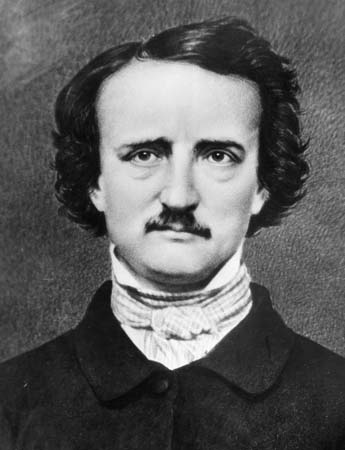
“It was toward the close of the fifth or sixth month of his seclusion, and while the pestilence raged most furiously abroad, that the Prince Prospero entertained his thousand friends at a masked ball of the most unusual magnificence”
(1). The revelers in The Masque of the Red Death, shield themselves within the confines of the flamboyant halls of their arrogant prince, refusing to acknowledge that their fate might be the same as their fellow man. The orchestra plays louder than the fear in their minds, whirling the waltzers within the chambers until the distinct hour on the clock is rung. As with the masqueraders that night, Edgar Allen Poe uses the toll of the ebony clock to produce a feeling of impending doom in reader .
On the western wall of the chamber of death, the ebony clock stands. “At each lapse of an hour , the musicians of the orchestra were constrained to pause, momentarily, in their performance, to hearken to the sound; and thus the waltzers perforce ceased their evolutions; and there was a brief disconcert of the whole gay company; and while the chimes of the clock yet rang, it was observed that the giddiest grew pale, and the more aged and sedate passed their hands over their brows as if in confused reverie or meditation” (2). As the clock ceased its chiming, the revelers began again, swearing not to allow the chimes to repeat the same effect. After another hour, the clock struck again, “And the same disconcert and tremulousness and meditation as before” (2) fell upon them. Eventually the hour that produces fear in all, the stroke of midnight, chimes and the masque of death enters the room, bringing death to them all. It is then, and only then, that the bell stops tolling.
In his short story, The Masque of the Red Death, Poe touches the fear of death in all of us, which is felt even more acutely when dire circumstances occur. We all know the clock is ticking, but its presence becomes louder as we face the masked mummer. We know our day will come, that fate can’t be prevented, yet we still attempt to trick the clock that races toward our hour.

Thank you so much for the great example, Ms. Michelle. It really helped me understand how to write my paper better.
ReplyDeleteI have a question, though...about the numbers in your essay. What do they mean? The numbers that come after your quotes...do they stand for the number paragraph from which the quote comes in the story? Will they be necessary when writing my paper?
Hi Glennellen, that is a page number where the quote is in the story. Whenever you have a quote you have to reference where you got it from. The # refers to the page number and the sentence should be typed like this.... words" one space(page #). In a real paper there would be a sources sited page with it, the kind we did with our research papers. The reader could look at the page number and see what source it was quoted from in the sources cited page. IF there was more than one source being quoted from you'd have to include the author's name and then the page number in the paranthesis.
ReplyDeleteYou should have a handout from class on Friday to look at for examples of different types of quotes.